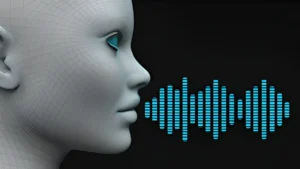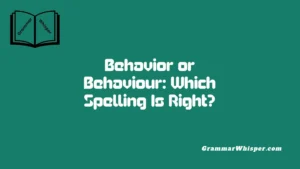When someone casually asks, “Should I say ‘All is well’ or ‘All is good’?”, they’re often uncovering more than they realize. From my experience as a language coach and writer, this isn’t just about one being grammatically correct. It’s about navigating the layers of English grammar, shifting usage, and personal preferences that have been evolving across cultures. I once worked with a client writing a heartfelt letter to a friend, and they asked the same thing. We took a thoughtful walk through these expressions, looking not just at grammar rules, but at tone and feeling. “All is well” connects with traditional, almost poetic roots, while “All is good” carries a relaxed, modern, conversational vibe.
The phrase you choose depends on what you want to express and when or where you’re saying it. “All is well” reflects calm and order, perfect for formal emails or deeper moments. “All is good” works better when chatting with friends or reacting to casual news. It’s helpful to learn these differences – not only to get the grammar right, but to capture the subtle meaning behind your words. Think of this as a friendly guide to help you know which to pick, based on what feels natural. Everything about these phrases tells a story – of grammatical structure, cultural change, and personal expression. Knowing the why behind the choice helps you use each with confidence.
Understanding Why “All Is Well” vs “All Is Good” Confuses People
On the surface, these phrases seem interchangeable. After all, both suggest that things are fine. But there’s a deeper grammatical reason why “All is well” is traditionally correct, and a social reason why “All is good” feels more modern and casual.
- “All is well” = standard, grammatically correct in formal English.
- “All is good” = informal, increasingly popular, and often used conversationally.
In reality, the choice depends on tone, audience, context, and grammatical intent.
The Core Grammar Rule: Why “All Is Well” Is Traditionally Correct
To understand this clearly, we have to look at linking verbs.
In English, the verb “to be” (is, are, was, were) is a linking verb, which connects the subject of a sentence with a complement that describes or identifies it.
| Component | Example |
| Subject | All |
| Linking Verb | is |
| Subject Complement | well/good |
Here’s the rule:
- When the complement describes a state of being or health, use “well” (an adverb used idiomatically as an adjective).
- When the complement describes something morally or qualitatively, use “good” (an adjective).
Thus, in standard usage:
✅ “All is well” is correct. ❌ “All is good” is technically incorrect but acceptable in informal contexts.
Breaking Down “All Is Well”: Grammar, Structure, and Tradition
The phrase “All is well” has deep roots in traditional English and has long been used in literature, historical documents, and formal speech. It reflects not just grammar but also tone.
Examples of Classic Usage:
- Literature: “All is well that ends well.” – Shakespeare
- Military Dispatches: “Report: All is well at the front line.”
- Old English Letters: “I trust all is well with thee.”
It’s worth noting that the use of “well” here isn’t just a grammatical choice – it also communicates calm, control, and reassurance.
What “All Is Good” Means in Modern Conversations
Although grammatically off, “All is good” has gained popularity in contemporary American English, especially in casual speech.
You’re likely to hear it:
- Among friends: “Hey, how’s everything?” → “All is good!”
- In emails or Slack messages between colleagues
- On social media: memes, captions, hashtags (#allgood)
Why It’s Used:
- Feels more relaxed and modern
- Carries a more positive, moral tone (good = desirable, pleasing)
- Reflects spoken English drift rather than textbook grammar
However, in formal writing or professional settings, “All is good” might still feel awkward or incorrect.
The Subtle Difference Between “Well” and “Good”
Let’s clarify the heart of the confusion.
| Term | Part of Speech | Meaning in This Context | Common Usage |
| Good | Adjective | Morally right, pleasant, beneficial | “You’re a good person.” |
| Well | Adverb (idiomatically adjective) | Healthy, satisfactory condition | “I feel well.” |
Quick Test:
Q: Can you say, “All is tasty”? A: Yes, because “tasty” is an adjective. Q: Can you say, “All is tasty”? A: No – adverbs don’t describe nouns or linking verbs like this.
So when you say:
- “All is well” – you’re describing a state of being
- “All is good” – you’re describing a value or judgment
Context is Everything: When to Use Each Phrase
Choosing between the two depends on where and how you’re speaking or writing.
When “All Is Well” Works Best:
- Formal letters or emails
- Academic writing
- Business presentations
- Medical or legal contexts
- Historical reenactments or religious settings
When “All Is Good” Feels Natural:
- Texting friends
- Social media posts
- Casual chats
- Light-hearted storytelling
Tip: If you’re ever unsure, use “All is well.” It’s always safe.
Tone, Audience, and Emotion: What These Phrases Convey
Both phrases imply stability or contentment, but they carry different emotional undertones.
| Phrase | Tone | Implied Emotion |
| All is well | Formal, calm | Reassurance, order |
| All is good | Casual, upbeat | Positivity, light-heartedness |
Imagine telling a friend vs. emailing your boss:
- Text: “No worries, all is good!”
- Work update: “All is well with the project.”
Tone matters. Always align your word choice with the setting.
How the English Language is Changing
Languages evolve, and English is no exception.
Linguistic Evolution in Action:
- Once-taboo phrases like “ain’t” are now heard in pop culture.
- “Literally” is now also accepted as an intensifier, not just factually.
- “All is good” is on the same path – it’s widely accepted informally.
But grammar purists and formal institutions still favor “All is well.”
So while usage may shift over time, the rule remains:
Formal = All is well. Informal = All is good
Better Alternatives to Both Phrases
Sometimes, neither phrase feels quite right. Here are natural-sounding alternatives for every situation:
| Alternative Phrase | Formality Level | Context Suggestion |
| Everything’s fine | Neutral | Universal |
| Things are looking good | Casual | Projects, plans |
| No worries | Informal | Texts, chats |
| Everything is in order | Formal | Business, legal |
| It’s all under control | Neutral | Reassurance, leadership |
Pro tip: Match the phrase to the mood of the conversation. Keep your intent clear.
Global English and Native Speaker Preferences
How does this choice vary across English-speaking countries?
- US/Canada: “All is good” is very common in informal speech.
- UK: More likely to say “All is well” or “Everything’s fine.”
- Australia/NZ: Use both interchangeably, often with “No worries.”
- India/South Asia: The phrase “All is well” is popular due to its cultural and cinematic influence.
🎬 Fun fact: The Bollywood movie “3 Idiots” made “All is well” a catchphrase across generations.
What Grammar Experts Say
Here’s what linguists and grammar guides suggest:
- Merriam-Webster: “Well” functions as a predicate adjective when describing health or general condition.
- Grammarly Blog: “All is good” may be informal, but that doesn’t make it wrong in all contexts.
- Cambridge Dictionary: The use of ‘good’ in place of ‘well’ is widespread in informal English.
Quote: “English is descriptive, not just prescriptive. What matters is clarity and intent.” – Dr. Lynne Murphy, Linguist, University of Sussex
What Should You Say? Final Verdict
Here’s the cheat sheet:
| Use Case | Preferred Phrase |
| Formal writing/speaking | All is well |
| Casual conversation | All is good |
| International or mixed audience | All is well (safe bet) |
| When in doubt | Everything’s fine |
Use “All is well” when you want to sound polished, professional, or traditional. Use “All is good” when you want to sound friendly, relaxed, and modern.
Real-Life Use Case Examples
Email to a Manager:
“Hi Sarah, just checking in to confirm all is well with the onboarding process.”
Text Message to a Friend:
“Don’t worry about it, bro. All is good.”
Business Report:
“All is well across departments following the restructuring.”
Instagram Caption:
“Beach day vibes. All is good 🌞🌊 #chillmode”
Conclusion
The choice between “All is well” and “All is good” may seem minor, but it reflects how carefully you use language to communicate tone, precision, and professionalism. While “All is well” adheres to traditional grammar rules and conveys a formal, composed tone, “All is good” leans toward casual and expressive modern usage.
Both are valid in their respective contexts, but understanding when to use each is a mark of strong communication skills. Whether you’re writing a polished email, chatting with friends, or creating content for global readers, let context be your guide. And if you’re ever in doubt, go with “All is well” – it’s timeless, accurate, and always appropriate.
FAQs
Is “All is good” grammatically incorrect?
Technically, yes – when following formal grammar rules. “Good” is an adjective, and linking verbs like “is” traditionally pair with adverbs (like “well”) when describing a state of being. However, in informal speech and modern usage, “All is good” is widely accepted and understood to mean things are going fine.
Can I use “All is well” in business communication?
Absolutely. “All is well” is appropriate – and even preferred – in business, academic, and professional settings. It communicates clarity, calmness, and professionalism, making it suitable for emails, reports, and meetings.
Does “All is good” sound more friendly or casual?
Yes. “All is good” conveys a relaxed, friendly, and emotionally positive tone. It’s commonly used in texts, conversations, and social media. It adds a sense of warmth or chillness that “All is well” doesn’t necessarily evoke.
Which phrase is better for global English speakers?
“All is well” tends to be better recognized across English-speaking regions, including the UK, South Asia, and formal settings globally. In contrast, “All is good” is more commonly used in American English and casual contexts.
Are there better alternatives than both phrases?
Yes. Depending on the context, you might use: “Everything’s fine” (neutral), “It’s all under control” (reassuring), “Things are looking good” (upbeat), “No worries” (very informal). Each offers a slightly different tone and should be matched to your audience.











